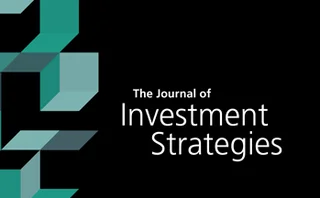Technical paper
On modeling zero-inflated insurance data
The authors of this paper use power series distributions to develop a novel and flexible zero-inflated Bayesian methodology.
Operational risk and the Solvency II capital aggregation formula: implications of the hidden correlation assumptions
The authors of this paper analyze the Solvency II standard formula for capital risk aggregation in relation to the treatment of operational risk capital.
An efficient convergent lattice method for Asian option pricing with superlinear complexity
In this paper the authors present an efficient convergent lattice method for Asian option pricing with superlinear complexity.
NetMES: a network based marginal expected shortfall measure
This paper aims to build novel measures of systemic risk that take the multivariate nature of the problem into account by means of network models.
A multilayer model of order book dynamics
This paper presents a two-layer order book model.
Directors’ networks and firm valuation in a concentrated ownership structure economy
The authors explore the implications of directors' networks for company valuation in a concentrated ownership environment and in pyramidal control structures.
A fuzzy data envelopment analysis model for evaluating the efficiency of socially responsible and conventional mutual funds
The authors of this paper use data envelopment analysis (DEA) to assess the relative efficiency of a sample of US equity mutual funds.
Optimal asset management for defined-contribution pension funds with default risk
This paper explores how a defined-contribution pension fund optimally distributes wealth between a defaultable bond, a stock and a bank account, given that a salary is a stochastic process.
Decomposition of portfolio risk into independent factors using an inductive causal search algorithm
This paper presents a method to estimate and decompose a portfolio’s risk along independent factors.
Path-consistent wrong-way risk: a structural model approach
The author of this paper presents a general and path-consistent wrong-way risk (WWR) model that does not require simulation of credit and market variables simultaneously.
Impact of nonstationarity on estimating and modeling empirical copulas of daily stock returns
This paper investigates the extent to which the nonstationarity of financial time series affects both the estimation and the modeling of empirical copulas.
Flylets and invariant risk metrics
Kharen Musaelian, Santhanam Nagarajan and Dario Villani show how to build robust risk metrics for bond returns
Valuation of barrier options using sequential Monte Carlo
The authors present Sequential Monte Carlo (SMC) method for pricing barrier options.
Organising the allocation
Yadong Li, Marco Naldi, Jeffrey Nisen and Yixi Shi propose a new capital allocation method
Modeling the current loan-to-value structure of mortgage pools without loan-specific data
This paper presents a method for approximating the current loan-to-value (CLTV) and remaining principal structures of heterogeneous mortgage loan pools.
A profit and loss attribution framework for physical and financial energy portfolios
A P&L attribution framework can improve the information available to energy traders
A reduced basis method for parabolic partial differential equations with parameter functions and application to option pricing
The authors introduce an RB space–time variational approach for parametric PPDEs with coefficient parameters and a variable initial condition.
The probability of backtest overfitting
The authors propose a general framework to assess the probability of backtest overfitting (PBO).
Modeling corporate customers’ credit risk considering the ensemble approaches in multiclass classification: evidence from Iranian corporate credits
This paper introduces a model which enables lenders to develop specific policies for credit granting by predicting the solvency and insolvency rates of their corporate clients.
An assessment of operational loss data and its implications for risk capital modeling
The author of this paper assesses operational loss data and its implications for risk capital modeling.
Comments on the Basel Committee on Banking Supervision proposal for a new standardized approach for operational risk
In this paper, the behavior of the SMA is studied under a variety of hypothetical and realistic conditions, showing that the simplicity of the new approach is very costly.
Should the advanced measurement approach be replaced with the standardized measurement approach for operational risk?
This paper discusses and studies the weaknesses and pitfalls of the SMA and the implicit relationship between the SMA capital model and systemic risk in the banking sector.
Multifactor risk models and heterotic CAPM
The authors of this paper give a complete algorithm and source code for constructing general multifactor risk models via any combination of style factors, principal components and/or industry factors.
The effective supply of collateral in Australia
This paper attempts to quantify the “effective” supply of collateral assets in Australia by applying a measure of supply that adjusts outstanding issuance for two important features of the collateral market.










